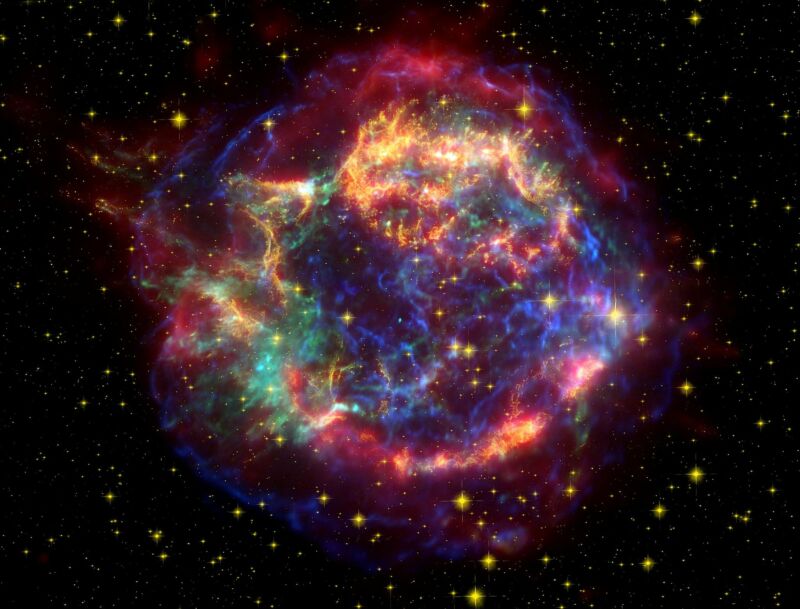Researchers propose a supernova triggered the Late Devonian mass extinction

Enlarge / The Cassiopeia A supernova which left this remnant behind occurred about 11,000 light years away-much too far to pose a significant threat-and its wavefront likely reached Earth about 300 years ago. (credit: NASA/JPL-Caltech)
A paper released this week by University of Illinois Urbana-Champaign astronomy and physics professor Brian Fields makes a case for distant supernovae as a cause of a past mass extinction event-specifically, the Hangenberg event, which marks the boundary between the Devonian and Carboniferous periods. Fields has proposed this sort of thing before, and both this and his earlier piece are fascinating exercises of "what-if." Each models the effects a supernova could have on Earth's biosphere, and how we might go looking for evidence that it happened.
It's important to understand, however, that neither of these papers should be taken as indications that there is evidence that the events referenced were caused by a supernova, or as representative of any general scientific consensus to that effect. They're simply intriguing proposals, and they indicate what sort of evidence we should look for.
Existential threatsIf you say "mass extinction" and "space" in the same sentence, the first thing on most peoples' minds is an asteroid impact with the Earth-even if dinosaur fans think of the Chicxulub crater, and pop culture fans think instead of movies such as Deep Impact or Armageddon.
Read 12 remaining paragraphs | Comments